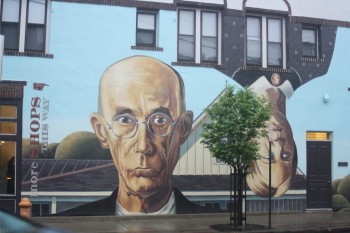Last week I shared conversations about artificial intelligence (AI) with a chief technology officer at Microsoft, a radiologist and the chief scientist for the U.S. Army Research Laboratory – and I was set to write this week about the disruption that AI promises across a spectrum of industry sectors. But then I came across this article in the Daily Yonder and I thought that for this week we can pause dystopian apprehension and focus on the arts (For what it’s worth, I think that AI will be a positive game changer, notwithstanding birth pangs as the world adapts to it; more on that to come).
If you haven’t visited the Daily Yonder later, it’s worth a click to go there. The online journal features articles about rural economies, education, ag and culture, and it is also a reliable gateway to U.S. government data including reports from the Census Bureau and Centers for Disease Control (the latter of which undertakes some interesting data gathering on broadband engagement). “What Funding Arts and Culture Can Do for Rural Communities” profiles rural communities that have blended grant funding with local support to create museums, maintain parks and even stand-up a program that brought a potter to a long-term care community to teach residents the craft of pottery. Hat tip to Fergus Falls, Minn., home to NTCA Smart Rural Community provider (and Showcase award winner) Park Region Telephone, which is profiled in the article. And in an utterly wonderful twist, the piece is presented by graphic journalist Nhatt Nichols in the form of (you guessed it) a graphic novel.
By way of example, North Adams, Mass. (pop. 12,880) converted a shuttered electric plant to a museum; the industrial buildings were a good fit for large-scale art that cannot be housed in other facilities. The Massachusetts Museum of Contemporary Art is now estimated to have created 77 jobs and indirectly generated an additional 150 jobs in various industries including hospitality and tourism; overall economic impact is estimated to be +45.71 percent return on investment on initial grants that funded the project. Whoops. We fell into numbers again. Let’s detour to talk about more general, qualifiable constructs.
It would be a fool’s errand to embark on a discussion of the role of art in society. There is simply too much to say and too much written on the subject to engage here. There is certainly healthy debate on the narrower topic of arts budgets in schools (both rural and urban). And this includes not just the classic “guns and butter” economic arguments but also the correlative data linking arts classes to SAT scores, college admission and personal development of soft skills that are demanded in nearly every current industry. For now, let’s focus on what might be the surprising success of engaging the unexpected.
In some circles, rural economic development focuses on the golden ring of attracting the industry that promises several hundred or more jobs. In other circles, economic development deploys a strategy of cultivating local talent, attracting and enabling small and medium-sized businesses and building a diversified local economy that relies on the intertwined relationships of locally operated firms as well as the (broadband-enabled) ability of at least some (if not many) firms to reach outside their geographic markets for business. And so, the examples often include the parts supplier who engages ecommerce to command a regional presence; a local crafter who sells wares nationally through a website; a financial advisor who practices anywhere through teleconferencing.
But the Daily Yonder article tells us that jobs and economic impact can come from unlikely sources and reminds us that in the realm of economic development, creativity is key. And that creativity of the arts can sometimes be that key.


